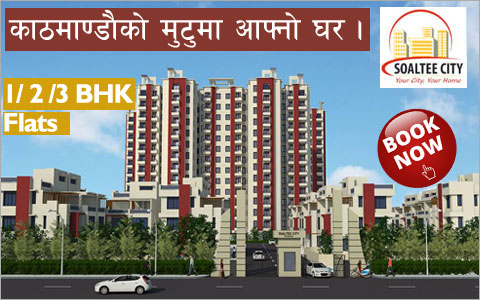National News
The government is getting ready to provide online services related to land and property transactions from next week. The Land Records Information Management System (LRIMS) will first be implemented at the Land Revenue Office (LRO) in Kalanki, and it will allow the general public to view their property information on the internet.
The Department of Land Reforms and Management (DoLRM) said that preparations were at the final stages at the Kalanki LRO. By February, the online system will also become available at the other four LROs in the Kathmandu valley—Dilli Bazaar, Chabahil, Lalitpur and Bhaktapur.
The LRIMS will permit people to view information about their land and building from the comfort of their homes. The system is expected to reduce crowds at the LROs coming to obtain details about their plots and the land taxes paid or outstanding.
The director at the land information and technology division at the DoLRM Shree Chandra Shah said the online system would be extended to all the LROs in the Kathmandu valley in two to three weeks after its debut at the Kalanki LRO. “Obtaining property details on the internet is a complicated task. And we are taking our time to make sure that there will be no glitches once the system goes online,” Shah said.
The scheme to put the LROs online was originally scheduled to be completed by July-end. However, technical hurdles like delays in data collection forced the department to defer the date till November. The DoLRM missed the second deadline too.
The main reason why the project has been held up is the complex process involved in verifying data. Handwritten land records are being computerized and uploaded after being put through a verification process. The process of data verification is going on at the seven LROs in the valley.
Likewise, another task that slowed things up was converting the data in Preeti font into Unicode after the government designated it as the formally recognized font.
Apart from the DoLRM and the five LROs in Kathmandu , the government has planned to introduce the system at nine other LROs in Kavre, Dhading, Chitwan, Makwanpur, Parsa, Morang, Kaski, Baglung and Banke in the near future.
According to Shah, the required hardware and software have been installed at the LROs. The system is currently being put through Operational Acceptance Testing (OAT) before going live.
“The OAT is expected to be completed in two to three days,” Shah said, adding that it was being performed daily from 8 am. “We will hold a training session for the employees before going live.”
The project is funded by the Asian Development Bank (ADB) and is being executed by an Indian-based company RMSI. A $1.365 million contract was signed between the DoLRM and RMSI on April 1, 2013 to implement the project.
Shah said that there would be no cost variation even though the project has encountered a time overrun. The DoLRM said that the ADB and the World Bank was willing to help the initiative in the future based on the outcome of the current project.
Meanwhile, the government is planning to issue a single integrated land ownership certificate to property owners after the system is implemented at all the LROs across the country.
Current laws allow people in the Tarai region to own 11 bighas of land (10 bighas as property and 1 bigha for residential use). The ceiling in the hilly region has been fixed at 75 ropanis (70 ropanis as property and 5 ropanis for residential use). Integrated land ownership certificates are expected to make it easier for the government to find out the amount of landholdings by individuals.
source: sanjeev giri, the kathmandu post, 5 jan 2015
- 9th Nepal Buildcon International Expo 2024
- Real Estate Expo 2023
- NRB raises housing loan limit to encourage home constructions
- Nepal Rastra Bank (NRB) Monetary Policy 2080-2081
- New Price of Land in Kathmandu Metropolitan City, Nepal
- Capital Gains Tax Rate on Real Estate Transactions in Nepal 2080-81 ( 2023/24 )
- Kathmandu metropolis implements free parking policy for commercial buildings and hospitals

![[X]](https://www.housingnepal.com/images/popup-close-button.png)










































































































































































































































































































































































































 Facebook
Facebook
 Delicious
Delicious
 Digg
Digg
 Reddit
Reddit
 Stumble Upon
Stumble Upon









